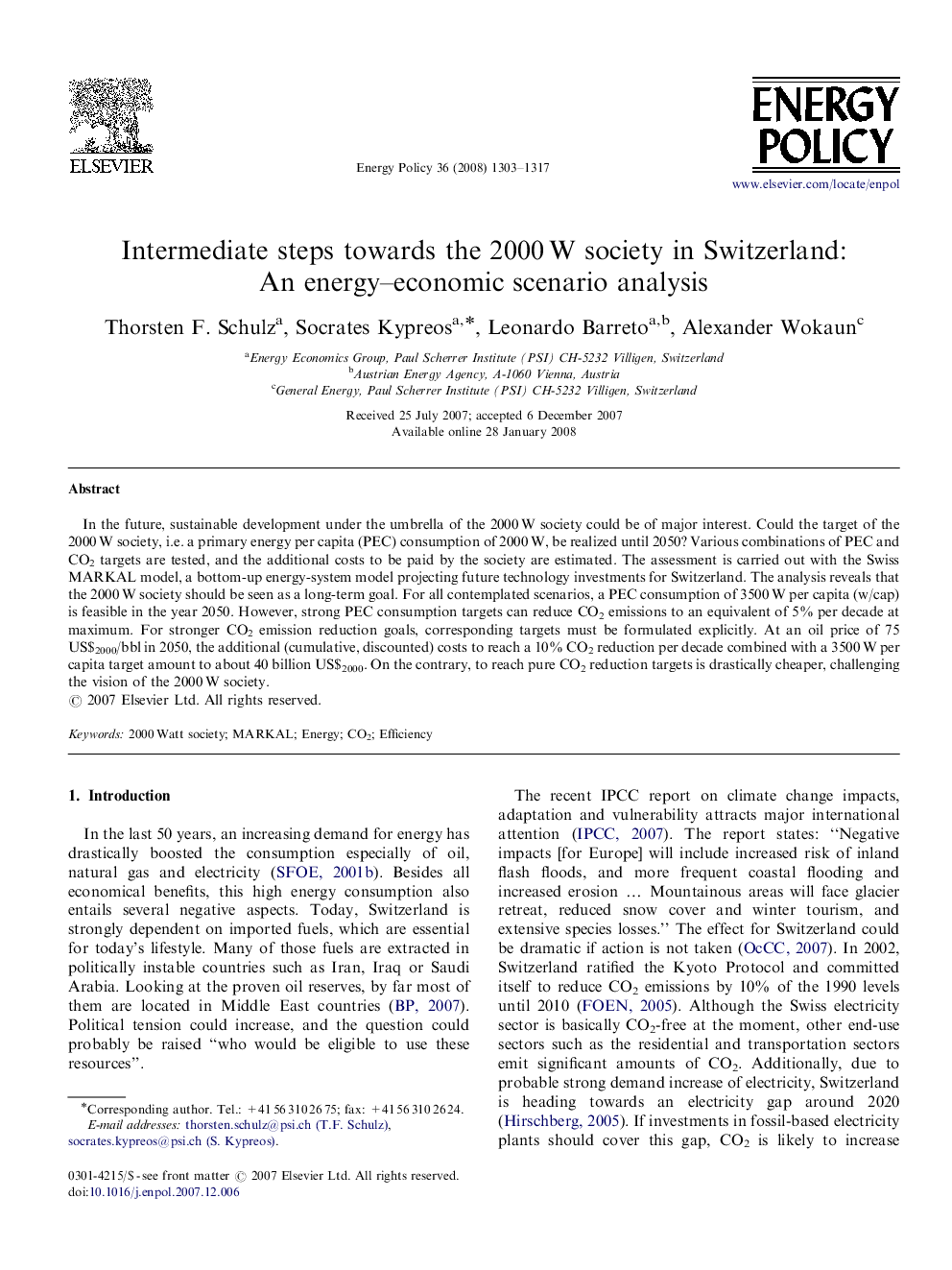| Article ID | Journal | Published Year | Pages | File Type |
|---|---|---|---|---|
| 994064 | Energy Policy | 2008 | 15 Pages |
In the future, sustainable development under the umbrella of the 2000 W society could be of major interest. Could the target of the 2000 W society, i.e. a primary energy per capita (PEC) consumption of 2000 W, be realized until 2050? Various combinations of PEC and CO2 targets are tested, and the additional costs to be paid by the society are estimated. The assessment is carried out with the Swiss MARKAL model, a bottom-up energy-system model projecting future technology investments for Switzerland. The analysis reveals that the 2000 W society should be seen as a long-term goal. For all contemplated scenarios, a PEC consumption of 3500 W per capita (w/cap) is feasible in the year 2050. However, strong PEC consumption targets can reduce CO2 emissions to an equivalent of 5% per decade at maximum. For stronger CO2 emission reduction goals, corresponding targets must be formulated explicitly. At an oil price of 75 US$2000/bbl in 2050, the additional (cumulative, discounted) costs to reach a 10% CO2 reduction per decade combined with a 3500 W per capita target amount to about 40 billion US$2000. On the contrary, to reach pure CO2 reduction targets is drastically cheaper, challenging the vision of the 2000 W society.
